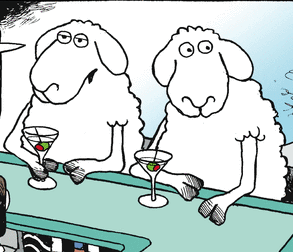Comic History for Wayback Wednesday
Skip to commentsSome cartoonist and comic strip histories from during and before our lifetime.
Jeffrey Lindenblatt returns to Stripper’s Guide with the 1991 stats for comic strips and panels that appeared in his survey of 300 newspapers (down to 268 dailies for 1991).

In the Top 30 spots, Calvin and Hobbes continued its climb moving one spot from number 5 to number 4 knocking Beetle Bailey down one spot to 5. This is the second time since we started this survey that Beetle Bailey has moved down one slot. Cathy had the biggest movement, up 3 spots from 15 to 12. This year no new strip entered the Top 30.
Comics letterer Todd Klein takes a look at Hal Foster’s letterer Charles F. Armstrong.

When the effects of the Great Depression hit the Palenske-Young Studio in 1930, assignments for all the artists were hard to find, and with the September 27, 1931 page, Hal Foster began producing the Sunday Tarzan strip, above, with Maxon continuing on dailies. Foster parceled out the work to his studio mates with the other men doing background penciling, inking and research, and Charles Armstrong lettering.
In late 1936, Foster quit TARZAN and began devoting his full efforts to PRINCE VALIANT IN THE DAYS OF KING ARTHUR for King Features. The first strip appeared on Feb 13, 1937, and again was lettered by Charles Armstrong in a similar style to what he had used on TARZAN.
Josh Wussow, for The Takeout, investigates “The Comic Origins of Dinty Moore Stew.”

[A]ccording to comic historians, the moniker was first popularized in a strip called Bringing Up Father,which began in 1913. The main characters were a pair of Irish immigrant New Yorkers who frequented a tavern owned by a man called Dinty Moore.
But the name isn’t purely an invention of fiction. The strip’s creator, George McManus, was a friend and patron of a certain James Moore, who ran a restaurant in midtown Manhattan…
A Newspapers.com search finds “Dinty Moore” first appearing in Bringing Up Father in Fall 1914.
Serendipitously Dinty’s is mentioned in today’s Vintage Bringing Up Father at Comics Kingdom.
Who’s Out There Explores The Dark Secrets Behind The Black Hole Comic Strip Adaptation.

In 1979 Walt Disney’s Treasury of Classic Tales adapted The Black Hole movie into a Sunday comic strip.
On the recommendation of comic artist Mike Royer they hired Jack Kirby to pencil the project.
I’ve been musing over these riddles ever since (in my spare time). Recently, I decided to act by putting the question to one who was there… namely Mr. Michael Royer, who’s been most gracious to us with his time and recollections (check out our three-part interview with MR!). And continues to be!
RG: Mr. Royer, I’ve long been baffled as to why Disney (or Western Publishing, at any rate), thought it necessary to commission two separate comics adaptations of The Black Hole. I’ve always surmised that Kirby was considered too wild for them, but that’s just speculation on my part...
Who’s Out There presents about a third of the adaptation from a French publication.
All 26 episodes by Carl Fallberg and Jack Kirby/Mike Royer can be read at ‘Tain’t The Meat.
Jason Chatfield’s Artist Spotlight: Ronald Searle.

Jason says:
Today’s Artist Spotlight is a very special edition: not only one of my favourite cartoonists of all time, but easily one of the most influential cartoonists in history…
There are few cartoonists who have had as wide an influence on cartooning as the great Ronald Searle. Personally, I have always had a deep admiration for his work— his style, his lens on the world, and his attitude to the process have influenced me enormously from a very young age.
Gary Larson’s The Far Side ran from the last day of 1979 to the first day of 1995.
Here’s a 1987 newspaper promo for the panel.


Comments 1
Comments are closed.